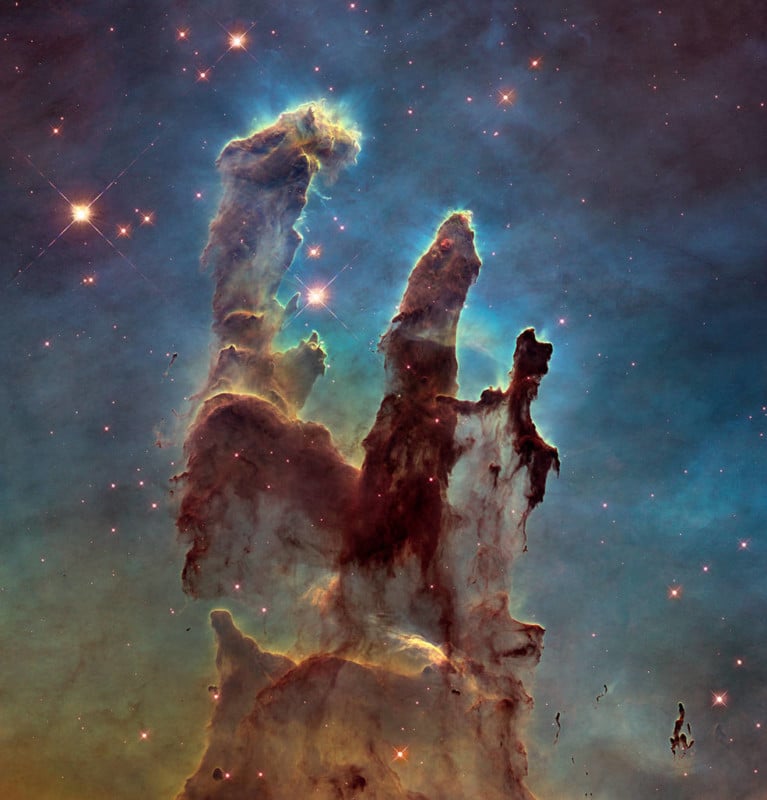Pillars of Creation: $16B Space Telescope vs $500 Backyard Photo
![]()
Photographer Andrew McCarthy recreated NASA’s famous “Pillars of Creation” photograph of the Eagle Nebula using a $500 telescope.
The original iconic image, taken by the Hubble telescope, shows an active star-forming region featuring towering tendrils of cosmic dust and gas in the heart of the Eagle Nebula, cataloged as M16.
It was first photographed in 1995 by NASA and has had a huge cultural impact with the image being featured on everything from “t-shirts to coffee mugs,” reports National Geographic.

A $16B Space Telescope vs a $500 backyard telescope
McCarthy spoke to PetaPixel about how he recreated the Pillars of Creation from his backyard in Arizona with a 12-inch Newtonian telescope and a monochrome camera using narrowband filters to create a vibrant color image.
“I shoot the Pillars of Creation a couple times a year. It’s a surprisingly accessible target, near the Sagittarius star cloud in the core of the Milky Way,” explains McCarthy.
“I used special software to remove all the stars in the image, so this unobstructed view really shows off the vast structures of gas and dust within the Eagle Nebula.
“The image was shot over several hours across multiple nights, while my telescope was guided along the stars using a sophisticated tracking mount that compensated for the earth’s rotation.”

McCarthy posted the image to Reddit where it’s received almost 10,000 upvotes. He believes that there’s not as big of a gap between very expensive government-sponsored telescopes and amateur star-gazers shooting from their backyard.
However, McCarthy says that the biggest barrier for amateurs is the atmosphere.
“The atmosphere completely blocks quite a few photons and distorts the rest. Hubble, James Webb, spitzer, etc, are all at an advantage that they are able to collect photons from targets completely unfettered by the atmosphere.
“But with commercial space flight opportunities expanding, amateur-operated space telescopes could soon become a thing,” he adds.
McCarthy accepts that a giant budget will still get you far more detailed images the backyard hobbyist, but believes there aren’t as many limits as people may think.
“With smaller telescopes, you can generally just spend more time shooting a target to see deeper into space. I can see objects billions of light-years away with my telescopes. Since I’m just using it to take pictures, there’s not much of a need for me to go further than that.”
More of McCarthy’s work can be seen on his website and Instagram.